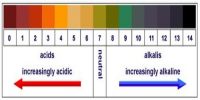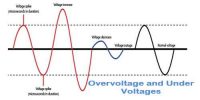How could we predict the direction in which a reaction at non-equilibrium conditions will shift to re-establish equilibrium?
The reaction quotient, Qc, is an expression that has the same form as the equilibrium- constant expression but whose concentrations are not necessarily at equilibrium. Substitute the current concentrations into the Qc expression and compare it to Kc.
Reaction Quotient Qc
For the general reaction:
aA + bB ↔ cC + dD
The Qc expression would be:
QC = [C]i [D]i / [A]i [B]i
Where [C]i is the concentration of C at a particular instant in time (not necessarily at equilibrium)
Predicting the Direction of Reaction
- If Qc > Kc, the reaction will shift left; toward reactants
- If Qc < Kc, the reaction will shift right; toward products
- If Qc = Kc, then the reaction is at equilibrium as follows: Reactants ↔ Products
Consider the following equilibrium:
N2 (g) + 3H2 (g) — 2NH3 (g)
A 50.0 dm3 vessel contains 1.00 mol of N2, 3.00 mol of H2 and 0.500 mol of NH3. In which direction (toward reactants or toward products) will the system shift to establish equilibrium at 400° C? Kc for the reaction at 400°C is equal to 0.500.
First, calculate concentrations from moles of substances as follows:
[N2] = 1.00 / 50.0 = 0.020 M,
[H2] = 3.00 / 50.0 = 0.060 M, and
[NH3] = 5.00 / 50.0 = 0.010 M.












